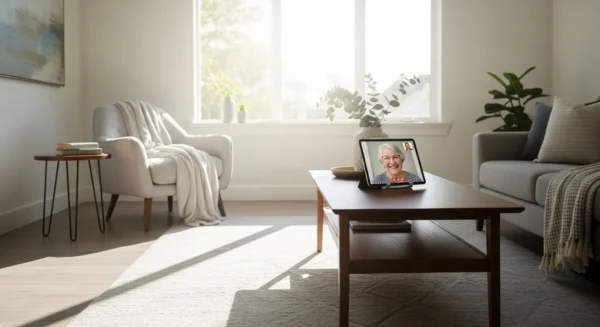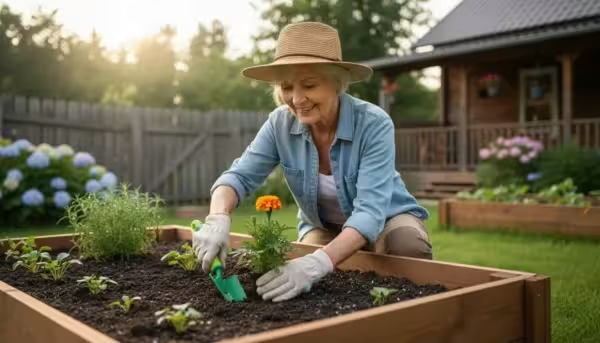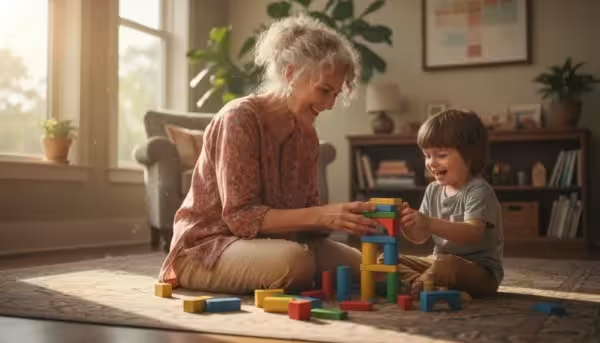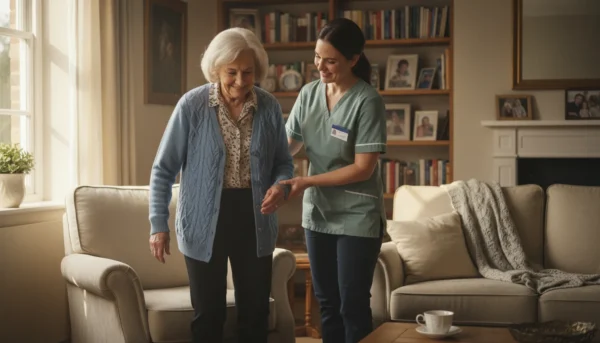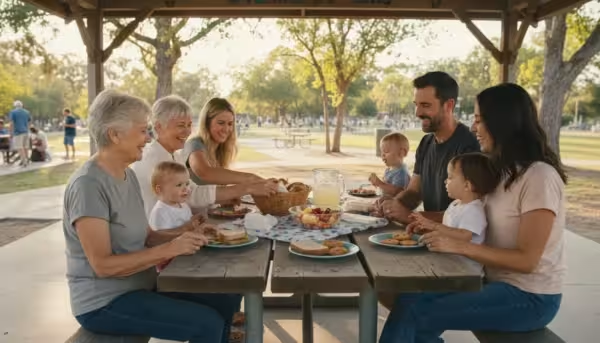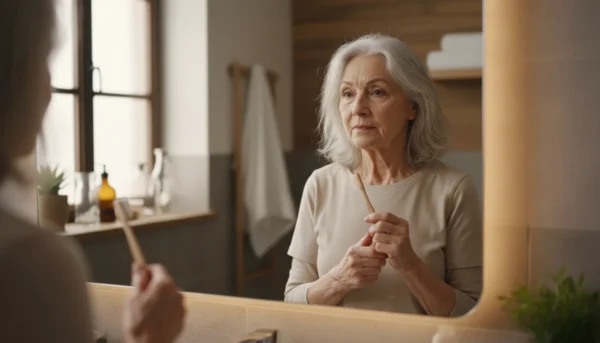
Welcome! We believe that your later years can be some of your most vibrant and fulfilling. Aging well isn’t about trying to turn back the clock; it’s about making smart, simple choices each day that help you feel your best, stay independent, and enjoy life to the fullest. Building a healthy lifestyle for older adults doesn’t require a complete overhaul of your life. Instead, it’s about incorporating small, consistent actions that add up over time.
As a specialist in senior wellness, I’ve seen firsthand how powerful daily habits can be. This guide is designed to give you practical, safe, and effective tips you can start using today. Think of these not as chores, but as daily investments in your own well-being. Let’s explore seven simple habits that promote healthy aging.

1. Stay Well-Hydrated Throughout the Day
The ‘Why’: Staying hydrated is one of the most important yet overlooked daily habits for seniors. As we age, our body’s ability to conserve water and our sense of thirst can both decrease. This means you might not feel thirsty even when your body needs fluids. Dehydration can lead to serious issues like dizziness (increasing fall risk), urinary tract infections (UTIs), constipation, fatigue, and even confusion that can be mistaken for dementia. Proper hydration is essential for maintaining energy levels, supporting kidney function, and helping your medications work effectively.
The ‘How’: Making hydration a conscious habit is key. It doesn’t mean you have to force down gallons of water, but it does mean being mindful and consistent.
-
Keep Water Visible and Accessible: Keep a dedicated water bottle or a pitcher and glass on your kitchen counter, your bedside table, or next to your favorite chair. If you see it, you’re more likely to drink from it.
Set a Gentle Schedule: Try to drink a glass of water at specific times each day—for example, right when you wake up, with each meal, and before you go for a walk. You can use a simple kitchen timer to remind you every hour or two.
‘Eat’ Your Water: Many fruits and vegetables have high water content. Add foods like cucumber, celery, watermelon, oranges, and strawberries to your diet for a hydrating boost. A bowl of soup is also an excellent way to get more fluids.
Make It Appealing: If plain water feels boring, infuse it with flavor. Add a few slices of lemon, lime, cucumber, or even some fresh mint to your pitcher. Unsweetened herbal tea (hot or iced) is another great option.
A friendly reminder: If your doctor has you on a fluid-restriction plan for a heart or kidney condition, it is very important to follow their specific instructions. Always check with your healthcare provider about your personal hydration needs.

2. Incorporate Gentle Movement into Your Routine
The ‘Why’: Regular physical activity is a cornerstone of senior wellness tips. The goal isn’t to train for a marathon, but to keep your body moving to maintain strength, balance, and flexibility. Gentle movement helps lubricate your joints, reduces the risk of falls by improving balance, boosts your mood by releasing endorphins, supports heart health, and helps you maintain the independence needed for daily tasks like carrying groceries or getting up from a chair.
The ‘How’: The best kind of movement is the kind you enjoy and can do safely and consistently. Even 10-15 minutes at a time can make a big difference.
-
Start Your Day with Stretches: Before you even get out of bed, you can gently stretch your arms, legs, ankles, and wrists to wake up your body. Once you’re up, try some gentle neck rolls and shoulder shrugs.
Practice ‘Chair’ Exercises: If you have concerns about balance, a sturdy chair is your best friend. While seated, you can do leg lifts, ankle circles, and arm raises. You can also use the back of the chair for support while doing standing leg curls or gentle squats.
Take a Short Walk: A daily walk, even if it’s just for 15-20 minutes, is wonderful for your cardiovascular health and your mind. If the weather is bad or you have mobility concerns, even walking back and forth in a clear hallway indoors is beneficial.
Focus on Balance: Improving balance is a critical part of fall prevention. A very safe way to start is by standing behind a sturdy chair, holding on for support, and trying to stand on one foot for 10-15 seconds. Then switch to the other foot. Only do what feels safe and stable for you.
A friendly reminder: It is essential to talk with your doctor or a physical therapist before beginning any new exercise program. They can help you create a plan that is safe and effective for your specific health needs.
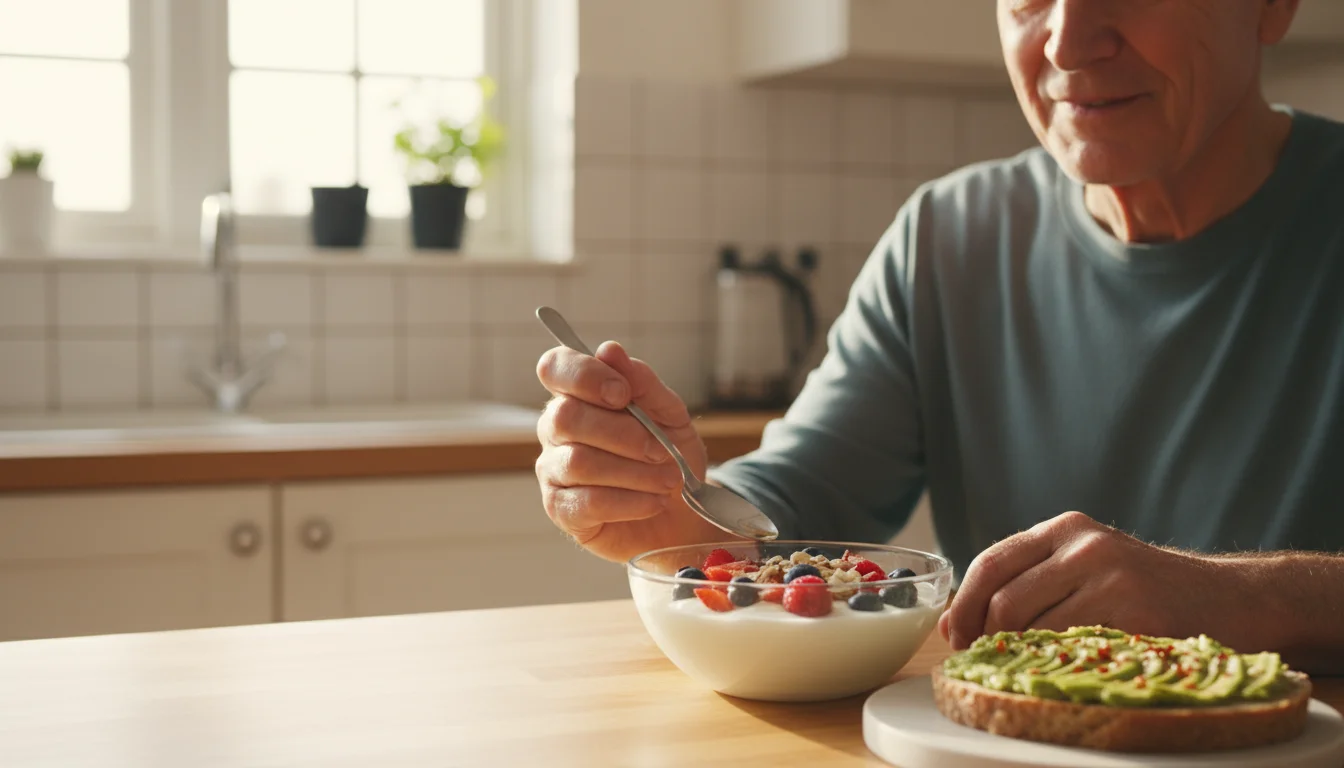
3. Fuel Your Morning with a Nutrient-Rich Breakfast
The ‘Why’: What you eat has a direct impact on your physical and cognitive health. Starting your day with a balanced breakfast is a powerful habit that sets the stage for the rest of the day. A good breakfast helps stabilize your blood sugar, provides sustained energy, and gives you the protein needed to combat age-related muscle loss (a condition called sarcopenia). Furthermore, a brain-healthy breakfast can improve focus and memory throughout the morning.
The ‘How’: A “nutrient-rich” breakfast doesn’t have to be complicated. The goal is to include three key components: protein for muscle and fullness, fiber for digestive health and stable energy, and healthy fats for brain function.
-
Protein Power: Aim for a good source of protein. This could be a scrambled or hard-boiled egg, a serving of Greek yogurt (which has more protein than regular yogurt), or a scoop of protein powder mixed into a smoothie.
Fabulous Fiber: Fiber is found in whole grains, fruits, and vegetables. A bowl of oatmeal with berries, a slice of whole-wheat toast, or adding spinach to your eggs are all easy ways to boost your fiber intake.
Healthy Fats: A sprinkle of nuts or seeds (like walnuts or chia seeds) on your oatmeal or yogurt, or a slice of avocado with your toast, provides healthy fats that are great for your brain and heart.
Simple Ideas: A bowl of old-fashioned oatmeal topped with walnuts and blueberries. Two scrambled eggs with a slice of whole-grain toast and half an avocado. Plain Greek yogurt mixed with sliced peaches and a sprinkle of slivered almonds.

4. Make a Meaningful Social Connection
The ‘Why’: Your social health is just as important as your physical health. Loneliness and social isolation are significant risk factors for depression, anxiety, and cognitive decline in older adults. Making a conscious effort to connect with another person every day is like taking a vitamin for your emotional well-being. These interactions stimulate your mind, provide a sense of belonging, and give you an emotional boost that can brighten your entire day.
The ‘How’: A “meaningful connection” can take many forms, and it doesn’t need to be a grand social event. The goal is quality over quantity.
-
Schedule a Daily Call: Make it a habit to call a friend, a family member, or a neighbor for a short chat. Putting it on your calendar, such as “Call Susan at 10 AM,” can help turn it into a routine.
Engage with Your Community: If you’re able, visit a local senior center, join a book club, or attend a class. Even a simple trip to the library or a coffee shop can provide opportunities for a friendly chat.
Embrace Technology: If friends and family live far away, video calls on platforms like FaceTime, Skype, or Zoom can make you feel much more connected than a simple phone call. Seeing a loved one’s face can make a world of difference.
Write a Note or Email: The act of writing to someone—whether it’s a quick email or a thoughtful handwritten card—is a wonderful way to foster connection and let someone know you’re thinking of them.

5. Challenge Your Brain in an Enjoyable Way
The ‘Why’: The phrase “use it or lose it” is particularly true when it comes to cognitive health. Engaging your brain with new and challenging activities helps build cognitive reserve—think of it as building a stronger, more resilient brain. This process, known as neuroplasticity, helps your brain form new pathways and can help maintain memory, processing speed, and problem-solving skills as you age.
The ‘How’: The key to making this a daily habit is to choose activities you genuinely enjoy. It shouldn’t feel like a chore; it should feel like play.
-
Puzzle It Out: Crossword puzzles, Sudoku, word searches, and jigsaw puzzles are fantastic and accessible ways to challenge your brain. They engage logic, memory, and attention to detail.
Be a Lifelong Learner: You’re never too old to learn something new. Read a book on a topic that fascinates you, watch a documentary, or listen to a podcast. There are thousands of free lectures and courses available online on every subject imaginable.
Play Games: Card games like bridge or pinochle, board games like Scrabble or chess, and even solo games like Solitaire are excellent for strategic thinking and memory. Playing with others adds a valuable social component as well.
Work with Your Hands: Hobbies that involve both your mind and your hands, such as knitting, painting, gardening, or learning to play a musical instrument, are incredibly powerful for building new neural connections.
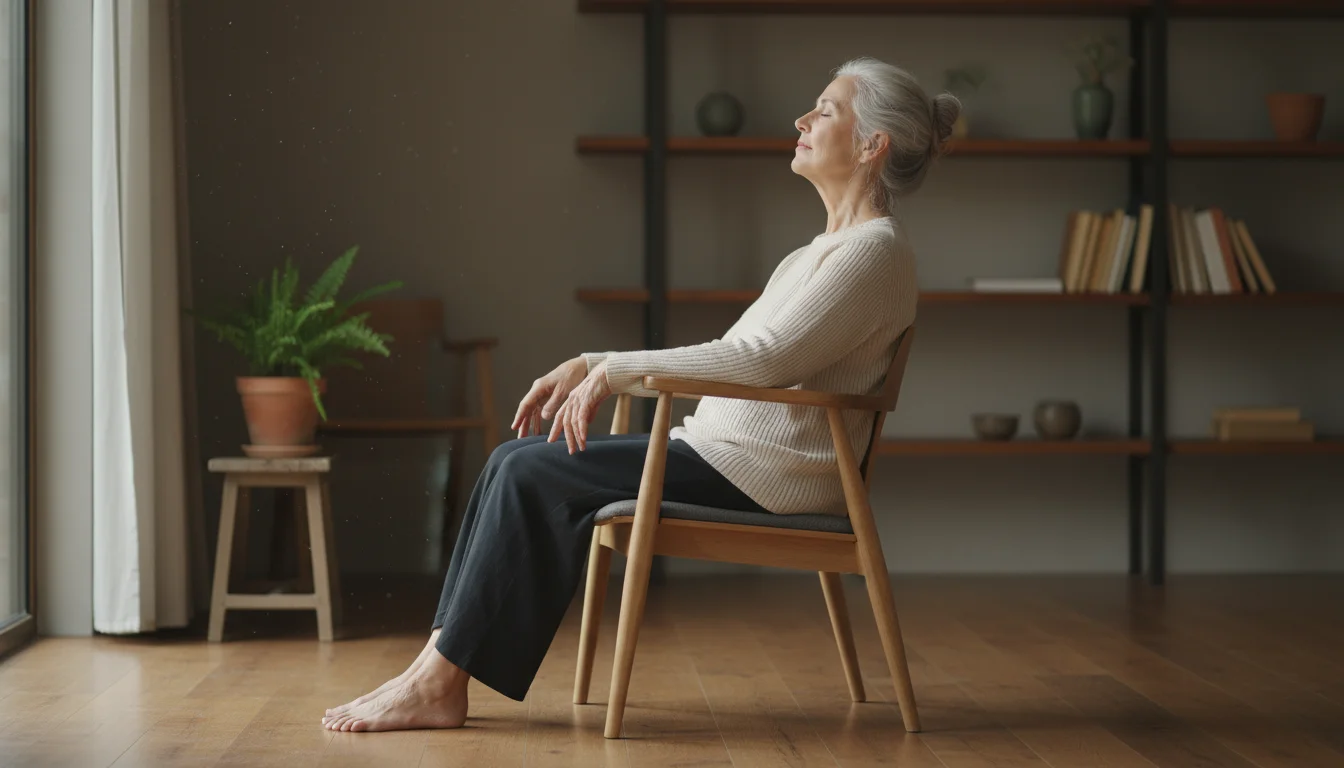
6. Practice a Few Moments of Mindfulness
The ‘Why’: Life can be stressful, and chronic stress can negatively impact your blood pressure, sleep, and overall mood. Mindfulness is the simple practice of paying attention to the present moment without judgment. It’s not about emptying your mind, but rather about calming the “chatter.” Just a few minutes of mindfulness each day can help reduce anxiety, improve your focus, and foster a greater sense of peace and well-being.
The ‘How’: This is one of the easiest daily habits for seniors to adopt because it requires no equipment and can be done anywhere.
-
Mindful Breathing: Sit comfortably in a chair with your feet flat on the floor. Close your eyes if you feel comfortable. Simply pay attention to the sensation of your breath. Notice the air entering your nostrils, filling your lungs, and then leaving your body. When your mind wanders (which it will!), gently guide your attention back to your breath. Try this for just two to three minutes.
The 5-4-3-2-1 Grounding Technique: If you feel anxious, take a moment to notice: 5 things you can see, 4 things you can feel (the chair beneath you, the fabric of your clothes), 3 things you can hear, 2 things you can smell, and 1 thing you can taste. This pulls your focus out of your worried thoughts and into your present environment.
Mindful Sipping: Instead of drinking your morning coffee or tea on autopilot, take a moment to do it mindfully. Notice the warmth of the mug in your hands, the aroma, the color of the liquid, and the flavor of the first sip. Savoring a simple pleasure is a form of mindfulness.
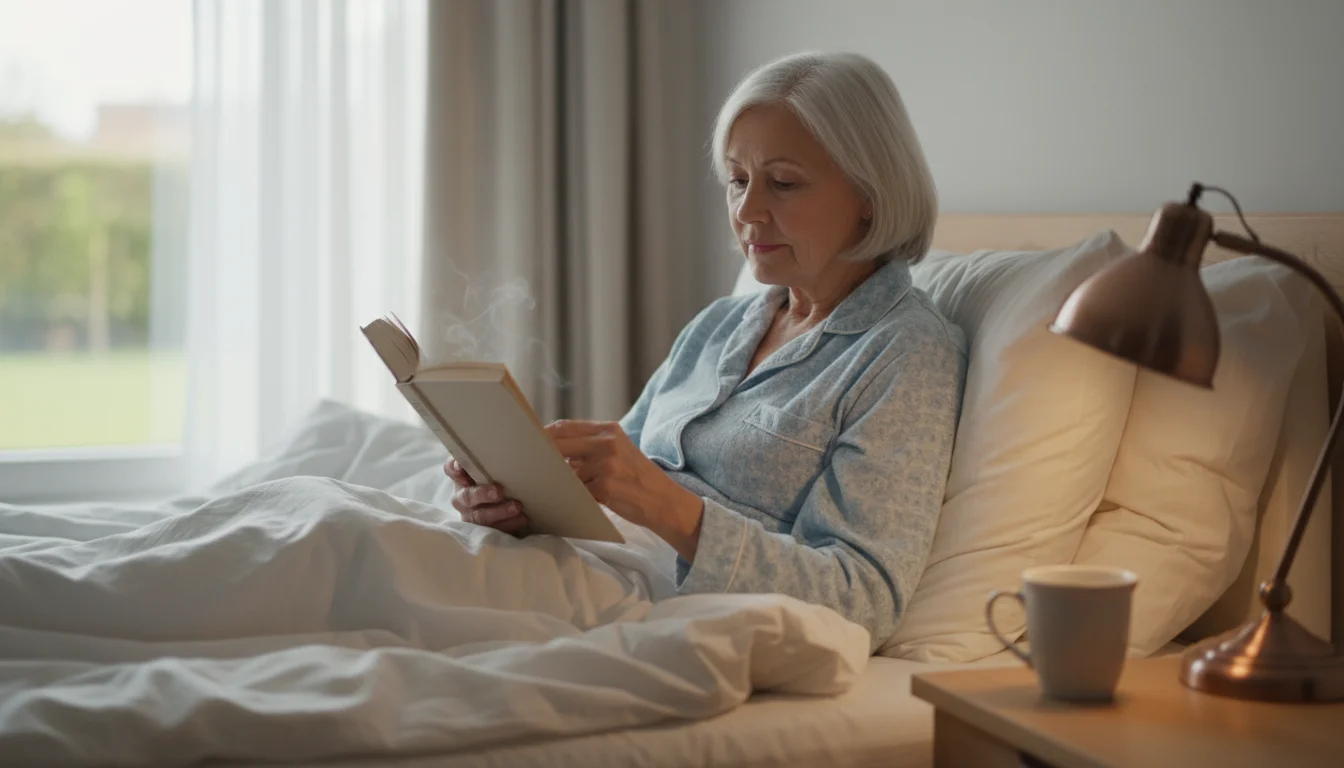
7. Create a Calming and Consistent Bedtime Routine
The ‘Why’: Sleep is not a luxury; it is a biological necessity. During sleep, your brain consolidates memories and clears out toxins, while your body repairs itself. While it’s true that sleep patterns can change with age, poor sleep is not an inevitable part of getting older. Establishing good “sleep hygiene” by creating a consistent bedtime routine signals to your brain and body that it’s time to wind down, making it easier to fall asleep and stay asleep.
The ‘How’: Your routine should be relaxing and repeatable. The 30-60 minutes before you get into bed are the most important.
-
Set a Consistent Time: Try to go to bed and wake up at roughly the same time every day, even on weekends. This helps regulate your body’s internal clock.
Power Down Screens: The blue light emitted from TVs, tablets, and smartphones can interfere with your body’s production of melatonin, the sleep hormone. Turn off all screens at least an hour before bed.
Create a Relaxing Atmosphere: Dim the lights in your home. Ensure your bedroom is cool, dark, and quiet. If needed, use blackout curtains or a white noise machine to block out disruptions.
Engage in a Calming Activity: Instead of watching TV, try reading a physical book or magazine (not on a bright screen), listening to calming music or an audiobook, doing some gentle stretches, or taking a warm bath.
Embracing these seven habits can profoundly enhance your quality of life. Remember to be patient and kind to yourself. Start with one or two that feel most achievable, and build from there. The goal is progress, not perfection. By taking these small, deliberate steps each day, you are actively participating in your own healthy aging journey and empowering yourself to live with more energy, clarity, and joy.
Important Note: The information in this article is for educational purposes only and is not a substitute for professional medical advice. Please consult with your doctor or another qualified health provider before making any significant changes to your diet, exercise, or health routine.
For expert guidance on senior health and finance, visit Centers for Medicare & Medicaid Services (CMS), Social Security Administration (SSA), Consumer Financial Protection Bureau (CFPB) and Administration for Community Living (ACL).
|
Fact-Checked Content
Our editorial team reviews all content for accuracy and updates it regularly. Learn about our editorial process →
|





